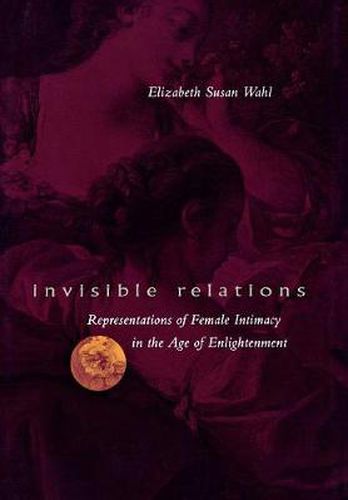Readings Newsletter
Become a Readings Member to make your shopping experience even easier.
Sign in or sign up for free!
You’re not far away from qualifying for FREE standard shipping within Australia
You’ve qualified for FREE standard shipping within Australia
The cart is loading…






This book explores the ambivalent and often contradictory ways in which English and French writers of the seventeenth and eighteenth centuries represented relations of intimacy between women. These representations included both a sexualized model of the lesbian tribade and an idealized model that portrayed female friendship as devoid of sexual expression. Although these two perceptions of female intimacy may seem mutually exclusive, the author argues that both operate as defining parameters, not only for literary representations of relations between women but also for cultural responses to those institutions in which women could gather salon, convent, theater, or brothel. Despite increasing evidence of female homosocial and homosexual bonds during this period, representations of female intimacy have remained largely invisible within critical discourse. They are overshadowed either by a dominant heterosexual understanding of such institutions as marriage or prostitution or by historical patterns of male homosexual behavior, to which they often do not correspond. By broadening the concept of intimacy to include relations between women that may evade or subvert the boundaries of compulsory heterosexuality, the author argues, one can locate a duality of polite and eroticized models of female intimacy in the cultural discourses of both France and England.
$9.00 standard shipping within Australia
FREE standard shipping within Australia for orders over $100.00
Express & International shipping calculated at checkout
This book explores the ambivalent and often contradictory ways in which English and French writers of the seventeenth and eighteenth centuries represented relations of intimacy between women. These representations included both a sexualized model of the lesbian tribade and an idealized model that portrayed female friendship as devoid of sexual expression. Although these two perceptions of female intimacy may seem mutually exclusive, the author argues that both operate as defining parameters, not only for literary representations of relations between women but also for cultural responses to those institutions in which women could gather salon, convent, theater, or brothel. Despite increasing evidence of female homosocial and homosexual bonds during this period, representations of female intimacy have remained largely invisible within critical discourse. They are overshadowed either by a dominant heterosexual understanding of such institutions as marriage or prostitution or by historical patterns of male homosexual behavior, to which they often do not correspond. By broadening the concept of intimacy to include relations between women that may evade or subvert the boundaries of compulsory heterosexuality, the author argues, one can locate a duality of polite and eroticized models of female intimacy in the cultural discourses of both France and England.